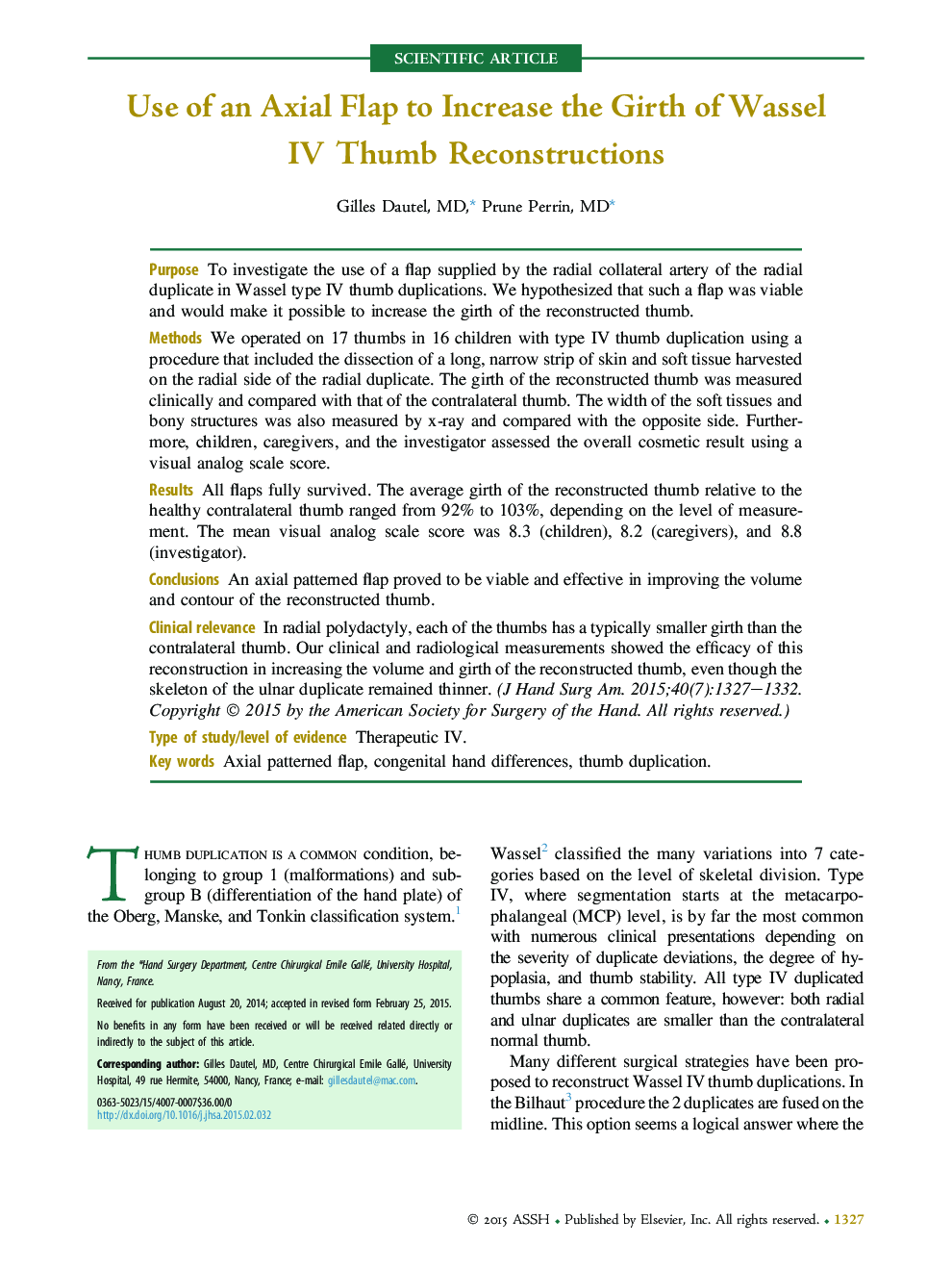| Article ID | Journal | Published Year | Pages | File Type |
|---|---|---|---|---|
| 4066622 | The Journal of Hand Surgery | 2015 | 6 Pages |
PurposeTo investigate the use of a flap supplied by the radial collateral artery of the radial duplicate in Wassel type IV thumb duplications. We hypothesized that such a flap was viable and would make it possible to increase the girth of the reconstructed thumb.MethodsWe operated on 17 thumbs in 16 children with type IV thumb duplication using a procedure that included the dissection of a long, narrow strip of skin and soft tissue harvested on the radial side of the radial duplicate. The girth of the reconstructed thumb was measured clinically and compared with that of the contralateral thumb. The width of the soft tissues and bony structures was also measured by x-ray and compared with the opposite side. Furthermore, children, caregivers, and the investigator assessed the overall cosmetic result using a visual analog scale score.ResultsAll flaps fully survived. The average girth of the reconstructed thumb relative to the healthy contralateral thumb ranged from 92% to 103%, depending on the level of measurement. The mean visual analog scale score was 8.3 (children), 8.2 (caregivers), and 8.8 (investigator).ConclusionsAn axial patterned flap proved to be viable and effective in improving the volume and contour of the reconstructed thumb.Clinical relevanceIn radial polydactyly, each of the thumbs has a typically smaller girth than the contralateral thumb. Our clinical and radiological measurements showed the efficacy of this reconstruction in increasing the volume and girth of the reconstructed thumb, even though the skeleton of the ulnar duplicate remained thinner.Type of study/level of evidenceTherapeutic IV.
